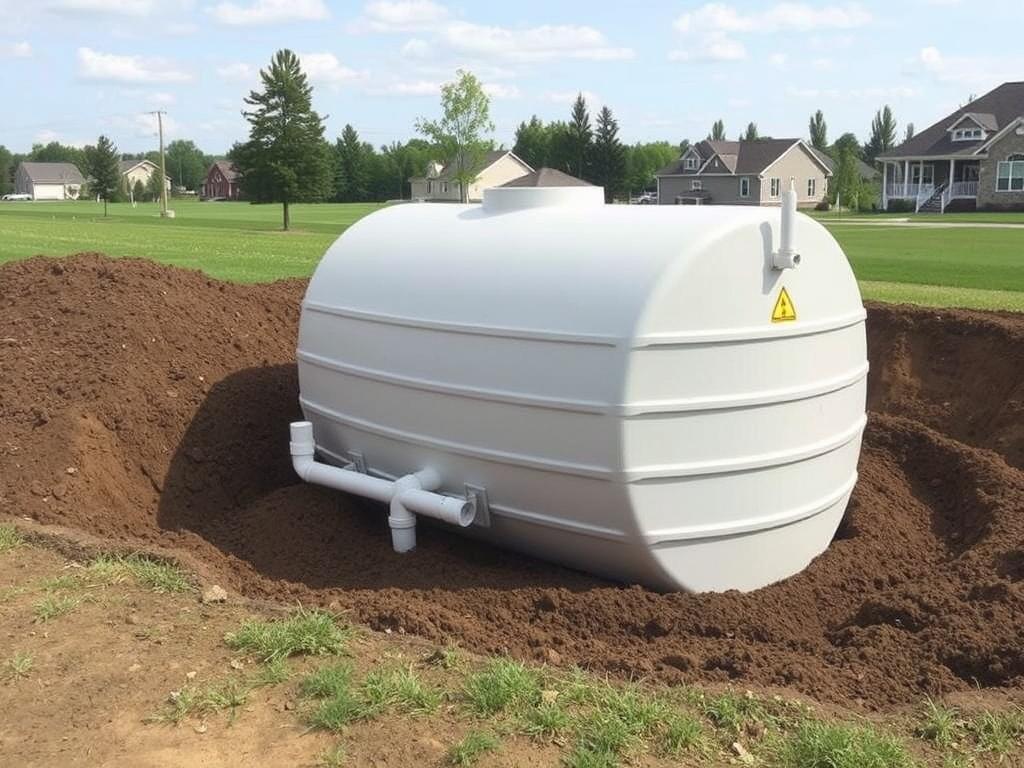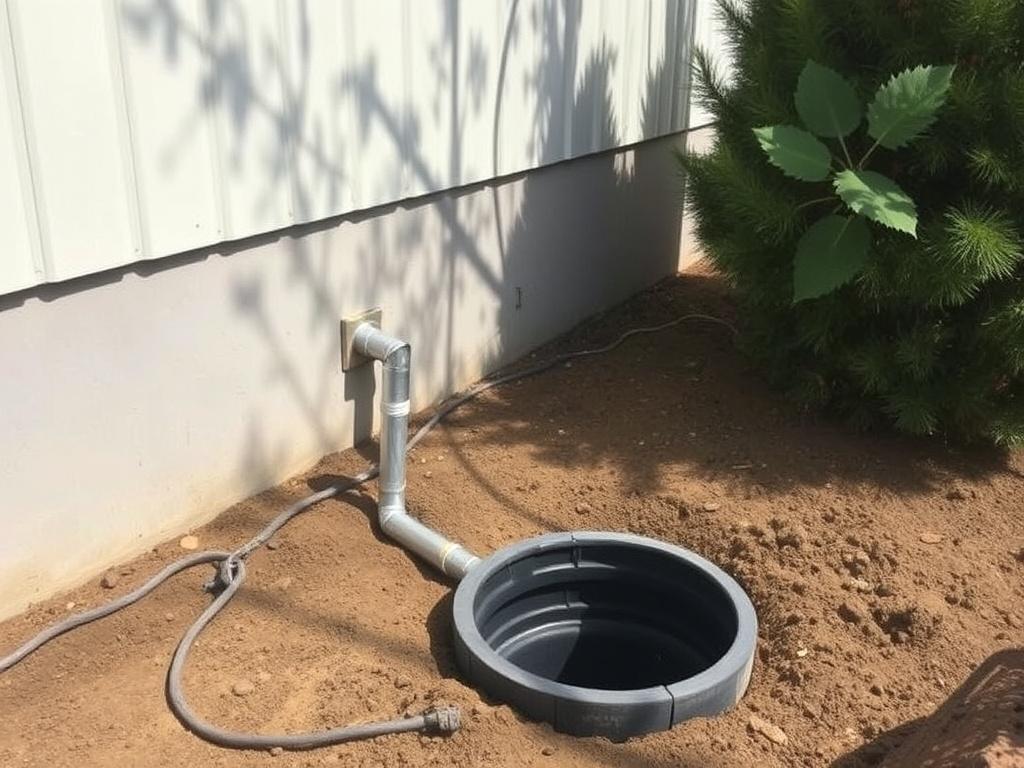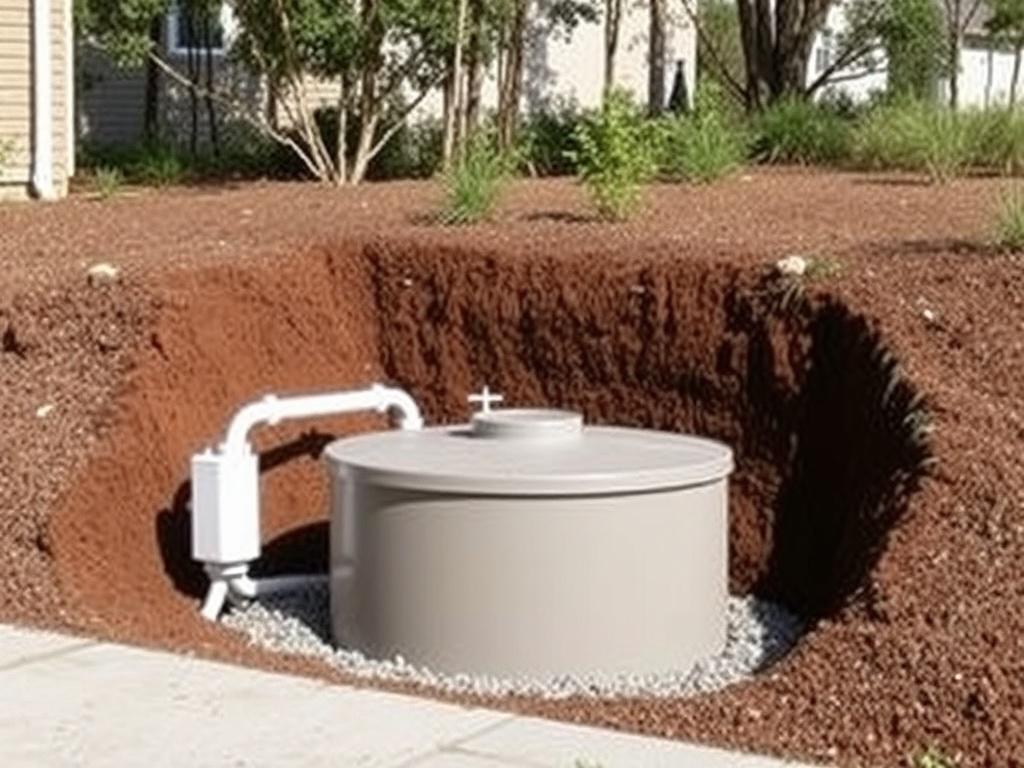When managing a commercial property, one of the most important yet often overlooked aspects is the wastewater management system. A septic tank for a commercial property is an essential solution for handling sewage where connection to a municipal sewer system is not feasible. Whether you are running a restaurant, office complex, or retail store, understanding how septic systems work, their installation, maintenance, and legal considerations can save you from costly repairs and ensure your property operates smoothly. In this comprehensive guide, we will explore every critical detail about septic tanks designed for commercial properties, so you feel confident making informed decisions.
- What Is a Septic Tank and Why Is It Important for Commercial Properties?
- Differences Between Residential and Commercial Septic Systems
- Factors to Consider When Installing a Septic Tank for a Commercial Property
- 1. Size and Capacity Requirements
- 2. Soil and Site Conditions
- 3. Local Regulations and Permits
- 4. Location of the Septic Tank
- 5. Budget and Long-term Costs
- Types of Septic Systems Suitable for Commercial Properties
- Installation Process of a Septic Tank for a Commercial Property
- Maintenance Tips for Commercial Septic Tanks
- Common Problems and Troubleshooting
- Legal and Environmental Considerations for Commercial Septic Systems
- Costs of Septic Tank Installation and Maintenance for Commercial Properties
- How to Choose a Professional for Your Commercial Septic Tank Needs
- Innovations and Future Trends in Commercial Septic Systems
- Conclusion
What Is a Septic Tank and Why Is It Important for Commercial Properties?
A septic tank is an underground, watertight container that stores and treats wastewater from buildings, separating solids from liquids and allowing treated water to percolate into the soil. While residential septic tanks are common, commercial properties often require specialized septic systems due to higher wastewater volumes and stricter environmental regulations.
The importance of a well-designed septic tank for a commercial property cannot be overstated. Unlike residential buildings, commercial properties often have more significant and complex wastewater flows, including from kitchens, bathrooms, and even industrial processes depending on the business. Failing to have a properly functioning septic system can lead to unpleasant odors, property damage, violations of health codes, and environmental hazards.
Differences Between Residential and Commercial Septic Systems

One common confusion is thinking a commercial septic tank functions just like a residential system. This is not the case. The design, size, and maintenance demands differ substantially depending on the property type. Here’s a quick comparison to better understand these differences:
| Aspect | Residential Septic Tank | Commercial Septic Tank |
|---|---|---|
| Wastewater Volume | Lower, based on family size | Higher, varies by number of employees/customers |
| Design Complexity | Simple design, single tank with drain field | More complex, may include multiple tanks, aerators, or treatment units |
| Regulatory Requirements | Less stringent, varies locally | More regulated, requires permits and compliance with commercial codes |
| Maintenance Frequency | Typically every 3-5 years | More frequent pump-outs and inspections |
| Cost | Lower initial and maintenance costs | Higher costs due to size and regulatory compliance |
Factors to Consider When Installing a Septic Tank for a Commercial Property
Before jumping into installation, it’s crucial to evaluate some key factors that will influence your septic system’s design and cost. These considerations help in ensuring the system suits your property’s unique needs and complies with all local regulations.
1. Size and Capacity Requirements
The capacity of a septic tank for a commercial property depends on the expected wastewater flow. This flow is influenced by the number of employees, customer traffic, and the type of business activities. For example, a busy restaurant with multiple restrooms and a commercial kitchen will generate more wastewater than a small office building. Experts generally calculate wastewater volume based on gallons per day per occupant or fixture units to recommend appropriate tank size.
2. Soil and Site Conditions
Soil type, drainage characteristics, and water table levels significantly impact the septic system’s design. Porous, sandy soil can absorb treated wastewater efficiently, while clay-heavy soil may need advanced drainage solutions. A soil percolation test (perc test) is essential before installation to understand how well your drain field will function.
3. Local Regulations and Permits
Every locality has regulations governing septic tank installation, especially for commercial properties. You will likely need permits and inspections throughout the process. Local health departments or environmental agencies establish these rules to protect public health and the environment, so adhering strictly to these is non-negotiable.
4. Location of the Septic Tank
The placement of the septic tank must consider proximity to the building, surface water bodies, and neighboring properties. Proper setbacks are required to prevent contamination of wells, streams, and adjacent landowners’ properties. Accessibility for maintenance is also an important factor.
5. Budget and Long-term Costs
While septic tanks for commercial properties have higher upfront costs than residential systems, investing in quality upfront can prevent expensive repairs later. Maintenance costs, including pumping and inspections, need to be factored into your budget.
Types of Septic Systems Suitable for Commercial Properties
Commercial septic tanks can be tailored to specific needs and may include advanced features not commonly found in residential systems. Here are some common septic tank types and treatment options for commercial use:
- Conventional Gravity Systems: These are suitable if your site has good soil drainage and low daily flow.
- Aerobic Treatment Units (ATUs): These systems add oxygen to the tank to promote faster bacterial breakdown of waste, ideal for properties with tight soil limitations.
- Sand Filter Systems: Wastewater passes through sand layers for additional treatment before reaching the drain field.
- Recirculating Media Filters: These improve treatment by filtering wastewater multiple times; useful where higher water quality is required before discharge.
- Mound Systems: Elevated drain fields built over sandy or shallow soils to improve percolation.
Installation Process of a Septic Tank for a Commercial Property

Installing a septic system for a commercial property requires professional expertise and compliance with numerous legal and environmental factors. While the specifics may vary, the general installation steps usually include:
- Site Evaluation and Soil Testing: Assessing the land’s suitability through soil tests, water table measurements, and location surveys.
- System Design: Engineers design the septic system, detailing tank sizes, pipe layout, and drain field specifications in line with regulations.
- Permitting: Apply and obtain the necessary permits and approvals from local authorities.
- Excavation and Tank Installation: Trenching the site, installing the septic tank, and ensuring correct pipe connections to the building’s plumbing.
- Drain Field Construction: Building the absorption area, whether it is conventional trenches or advanced systems like mounds or filters.
- Inspection and Testing: Local authorities often require inspection before backfilling and final approval before use.
- System Commissioning: Once approved, the system is ready for regular operation and maintenance.
Maintenance Tips for Commercial Septic Tanks
A septic tank for a commercial property requires regular maintenance to operate effectively and avoid failures. The following maintenance tips can extend the system’s lifespan and reduce the risk of costly repairs:
- Regular Pumping: Most commercial septic tanks need to be pumped every 1-3 years, depending on usage volume. Overloaded tanks can clog and cause backups.
- Frequent Inspections: Inspect baffles, tanks, and drain fields periodically for signs of damage, leaks, or odors.
- Waste Disposal Practices: Avoid flushing hazardous chemicals, grease, or non-biodegradable materials, which can disrupt bacterial activity and damage the system.
- Control Water Usage: Excessive water can overwhelm the system. Implement water conservation measures to reduce strain on the tank.
- Maintain Drain Fields: Keep the drain field clear of heavy machinery, impermeable surfaces, and deep-rooted plants.
Common Problems and Troubleshooting
Even well-maintained septic tanks can experience issues. Understanding common problems helps in early detection and prompt solution:
| Problem | Causes | Symptoms | Solutions |
|---|---|---|---|
| Septic Tank Backup | Full tank or blocked outlet pipes | Slow drains, sewage odor inside building | Immediate pumping, pipe clearing |
| Drain Field Failure | Soil saturation, clogging with solids | Pooling water or sewage on surface | Professional assessment, replacing or resting field |
| Odors | Poor venting, tank damage | Strong sewage smells near property | Inspect vents, repair cracks, clean tank |
| Excessive Algae or Vegetation Growth | Nutrient leakage from system | Unusual plant growth near drain field | System inspection and repair |
Legal and Environmental Considerations for Commercial Septic Systems
Because commercial properties often impact larger populations and environments, legal and environmental factors carry greater weight. Some vital points include:
- Compliance with Environmental Regulations: Many jurisdictions require commercial septic systems to meet stricter effluent quality standards to protect groundwater and surface water bodies.
- Permits and Documentation: Accurate record-keeping of system design, installation, and maintenance is mandatory for inspections and renewals.
- Impact on Property Value: Well-maintained septic tanks preserve property value; conversely, failing systems can significantly deter buyers or tenants.
- Insurance Requirements: Some insurance policies may require evidence of proper septic system maintenance and operation.
Costs of Septic Tank Installation and Maintenance for Commercial Properties
Understanding the financial aspect will help you budget effectively for your commercial septic tank. Costs vary widely depending on the system type, size, soil conditions, and location.
| Expense Category | Estimated Cost Range (USD) | Notes |
|---|---|---|
| Site Evaluation and Design | $1,000 – $5,000 | Depends on complexity and professional fees |
| Septic Tank Installation | $10,000 – $30,000+ | Higher for large or advanced systems |
| Drain Field Installation | $5,000 – $15,000+ | Varies with soil condition and system type |
| Permitting and Inspections | $500 – $2,000 | Varies by local authorities |
| Regular Pumping and Maintenance | $300 – $1,000 per visit | Frequency depends on tank size and use |
Planning for these expenses as part of your property management budget can alleviate surprises and keep your septic system in top condition.
How to Choose a Professional for Your Commercial Septic Tank Needs
Hiring experienced professionals for design, installation, and maintenance is critical. Here are some tips for choosing the right contractor:
- Licensing and Certification: Verify that the company holds necessary licenses and certifications for septic systems in your area.
- Experience with Commercial Properties: Ask specifically about their experience with commercial septic tanks.
- References and Reviews: Check testimonials, online reviews, and references to evaluate reliability and quality.
- Detailed Estimates: Obtain written quotes covering all aspects including design, installation, permits, and maintenance.
- Warranty and Support: Inquire about warranties and ongoing support or emergency services.
Innovations and Future Trends in Commercial Septic Systems

Technology and environmental awareness are shaping the future of septic systems, including those for commercial use:
- Advanced Treatment Technologies: Systems using membrane bioreactors or constructed wetlands provide higher water quality.
- Remote Monitoring: IoT sensors allow real-time monitoring of system performance and alert property managers to issues before they escalate.
- Eco-Friendly Solutions: Green septic systems integrate natural processes and reduce chemical usage.
- Modular Systems: Scalable designs help commercial properties easily expand or modify their septic infrastructure.
These innovations promise more efficient, sustainable, and cost-effective septic solutions tailored for commercial needs.
Conclusion
Installing and maintaining a septic tank for a commercial property involves careful planning, understanding complex regulatory landscapes, and committing to ongoing maintenance. While costs and efforts might seem daunting, investing in a well-designed septic system ensures public safety, environmental protection, and smooth business operations. By evaluating your property’s specific needs, choosing the right system, and partnering with experienced professionals, you can secure a reliable wastewater solution that supports your commercial property’s success for years to come. Remember, proactive care and compliance are key to avoiding expensive troubles and safeguarding this essential infrastructure.
Помогла вам статья?






